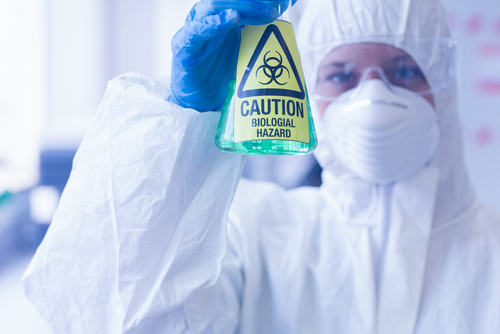
A major gap in international standards for biosafety in laboratories handling contagious pathogens potentially increases the risk that an accident could result in a disease outbreak that threatens global security, according to a recent study by the UPMC Center for Health Security.
The year-long research project focused on the potential for a biological research laboratory accident to lead to an epidemic or pandemic and become an international public health problem.
“The idea was to look at what it would take to make biosafety more politically important and what should leaders know about biosafety and what should they expect other countries to be doing about it,” Gigi Kwik Gronvall, senior associate at the UPMC Center for Health Security, said in an interview with Homeland Preparedness News.
The study examined biosafety regulations in 10 nations, finding that while there are plenty of guidelines for training workers and for keeping researchers safe at individual institutions, there is a wide discrepancy in the quality and quantity of biosafety regulations at the international level.
Without firm international biosafety standards, there is no way for a country to be certain that other countries have an adequate surveillance system in place to identify and limit potential outbreaks of disease in the event of a biocontainment failure, the study said.
A lack of biosafety norms also means that nations will have less incentive to commit resources to maintain strong biosafety measures in individual laboratories.
“There is a big gap in international agreements, and to be able to fill that will require a lot more telling and showing of people that this is a problem that every nation is going to have if there is a serious laboratory accident that becomes an international problem,” Gronvall said.
Laboratory accidents happen, but, to date, most have had a limited impact on international human health, the report said. In the United States, safety in labs that handle potentially dangerous biological agents like anthrax has been the subject of many Congressional hearings.
The UPMC study cited Severe Acute Respiratory Syndrome (SARS) as one example of a laboratory acquired infection with a transmissible pathogen that could threaten national or international security in the event of an accident.
Gronvall said that the study also brought to light the dearth of research on biosafety, specifically on how biosafety can be improved.
“There is a stark need for more data to inform biosafety policy; very little research into biosafety research practices and equipment is being funded or performed,” the report said.
Developing international biosafety norms and convincing nations to invest in biosafety will require international partners like the World Health Organization or the United Nations, Gronvall said.
The study addressed the potential of a laboratory accident to lead to an international public health emergency, but did not address other types of national security threats, such as bioterrorism.
“This project focused on safety because a lot of what we can do to make the laboratory more safe and to make the nation more prepared to handle human error will bring you a long way in dealing with security threats,” Gronvall said.
The UPMC research project was funded by the Department of Defense through the Naval Postgraduate School Project on Advanced Systems and Concepts for Countering WMD.




